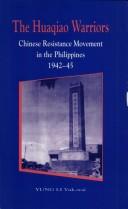| Listing 1 - 10 of 114 | << page >> |
Sort by
|
Book
ISBN: 1526750724 9781526750730 1526750732 9781526750716 9781526750723 1526750716 1526750740 Year: 2019 Publisher: Barnsley
Abstract | Keywords | Export | Availability | Bookmark
 Loading...
Loading...Choose an application
- Reference Manager
- EndNote
- RefWorks (Direct export to RefWorks)
Book
ISBN: 9780674731226 9780674970373 0674970373 0674731220 067497039X Year: 2016 Publisher: Cambridge, MA
Abstract | Keywords | Export | Availability | Bookmark
 Loading...
Loading...Choose an application
- Reference Manager
- EndNote
- RefWorks (Direct export to RefWorks)
Olivier Wieviorka’s history of the French Resistance debunks lingering myths and offers fresh insight into social, political, and military aspects of its operation. He reveals not one but many interlocking homegrown groups often at odds over goals, methods, and leadership. Yet, despite a lack of unity, these fighters braved Nazism without blinking.
World War, 1939-1945 --- Underground movements --- France --- History
Book
ISBN: 0820350001 9780820350004 9780820350011 9780820350028 Year: 2016 Publisher: Athens The University of Georgia Press
Abstract | Keywords | Export | Availability | Bookmark
 Loading...
Loading...Choose an application
- Reference Manager
- EndNote
- RefWorks (Direct export to RefWorks)
Kansas --- Missouri --- United States --- History --- Influence. --- Underground movements. --- Guerrillas
Book
ISBN: 077359289X 9780773592896 0773505075 9780773505070 Year: 1979 Publisher: Montreal [Quebec] Ottawa, Ontario
Abstract | Keywords | Export | Availability | Bookmark
 Loading...
Loading...Choose an application
- Reference Manager
- EndNote
- RefWorks (Direct export to RefWorks)
World War, 1939-1945 --- Underground movements --- Norway --- History
Book
ISBN: 0807866032 1469605589 0807888672 0807888680 9780807888681 9781469605586 9780807888674 9780807832776 0807832774 1469606887 9781469606880 9798893133608 Year: 2009 Publisher: Chapel Hill University of North Carolina Press
Abstract | Keywords | Export | Availability | Bookmark
 Loading...
Loading...Choose an application
- Reference Manager
- EndNote
- RefWorks (Direct export to RefWorks)
The American Civil War is famous for epic battles involving massive armies outfitted in blue and gray uniforms, details that characterize conventional warfare. A Savage Conflict is the first work to treat guerrilla warfare as critical to understanding the course and outcome of the Civil War. Daniel Sutherland argues that irregular warfare took a large toll on the Confederate war effort by weakening support for state and national governments and diminishing the trust citizens had in their officials to protect them.
Guerrilla warfare --- Guerrillas --- History --- United States --- Underground movements.
Book
ISBN: 1283259397 9786613259394 9048515327 9789048515325 9789052603698 9052603693 Year: 2011 Publisher: Amsterdam Uitgeverij Aksant
Abstract | Keywords | Export | Availability | Bookmark
 Loading...
Loading...Choose an application
- Reference Manager
- EndNote
- RefWorks (Direct export to RefWorks)
Op het moment dat de Duitsers op 10 mei 1940 Nederland binnenvielen, wist christen en socialist J.H. Scheps precies wat hem te doen stond: de vijand weerstaan. Dat heeft Scheps ook op bijzondere wijze gedaan. Afkerig als hij was van het gebruik van geweld, geloofde hij slechts in de kracht van geestelijke weerbaarheid. Scheps liet zich daarbij leiden door het evangelie, het socialisme, de democratie en het positieve recht.In tal van spreekbeurten en brochures riep hij zijn landgenoten op tot dezelfde houding. Hij ging er tot het einde van de bezettingstijd mee door, ook in de periode 1944-1945
World War, 1939-1945 --- Underground movements. --- Scheps, J. H.

ISBN: 1282704575 9786612704574 9882201806 9789882201804 9622093736 9789622093737 Year: 1995 Publisher: Hong Kong Hong Kong University Press
Abstract | Keywords | Export | Availability | Bookmark
 Loading...
Loading...Choose an application
- Reference Manager
- EndNote
- RefWorks (Direct export to RefWorks)
Among the extremely limited English language literature on the Chinese resistance movement in the Philippines during the Japanese occupation, this book is unique in making use of documents from the United States National Archives, supplemented by memorials and articles recently published in China and the Philippines. While the reliability of these original sources is questionable, the difficulty of interpreting these sources was dealt with openly and effort was made to compare contradictory accounts objectively. Meanwhile, the characteristics of the Chinese resistance movement were summarized in its historical social context, and the long-term effect of the resistance movement on the Chinese community in the Philippines was addressed. The book thus fills an important gap in Philippine historiography on the Second World War and in the understanding of the Philippine Chinese community and the effect of Japanese occupation upon it.
Guerrillas --- World War, 1939-1945 --- Underground movements --- Philippines --- History
Book
ISBN: 2020045575 9782020045575 Year: 1977 Publisher: Paris Seuil
Abstract | Keywords | Export | Availability | Bookmark
 Loading...
Loading...Choose an application
- Reference Manager
- EndNote
- RefWorks (Direct export to RefWorks)

ISBN: 3463007568 Year: 1979 Publisher: München Kindler
Abstract | Keywords | Export | Availability | Bookmark
 Loading...
Loading...Choose an application
- Reference Manager
- EndNote
- RefWorks (Direct export to RefWorks)
World War, 1939-1945 --- Underground movements --- Europe --- Germany --- History --- Foreign relations
Book
ISBN: 0674048911 0674065131 0674069439 9780674069435 9780674065130 9780674048911 Year: 2012 Publisher: Cambridge, MA
Abstract | Keywords | Export | Availability | Bookmark
 Loading...
Loading...Choose an application
- Reference Manager
- EndNote
- RefWorks (Direct export to RefWorks)
Germany's 1941 seizure of Yugoslavia led to an insurgency as bloody as any in World War II. The Wehrmacht waged a brutal counter-insurgency campaign in response, and by 1943 German troops in Yugoslavia were engaged in operations that ranked among the largest of the entire European war. Their actions encompassed massive reprisal shootings, the destruction of entire villages, and huge mobile operations unleashed not just against insurgents but also against the civilian population believed to be aiding them. Terror in the Balkans explores the reasons behind the Wehrmacht's extreme security measures in southern and eastern Europe.Ben Shepherd focuses his study not on the high-ranking generals who oversaw the campaign but on lower-level units and their officers, a disproportionate number of whom were of Austrian origin. He uses Austro-Hungarian army records to consider how the personal experiences of many Austrian officers during the Great War played a role in brutalizing their behavior in Yugoslavia. A comparison of Wehrmacht counter-insurgency divisions allows Shepherd to analyze how a range of midlevel commanders and their units conducted themselves in different parts of Yugoslavia, and why. Shepherd concludes that the Wehrmacht campaign's violence was driven not just by National Socialist ideology but also by experience of the fratricidal infighting of Yugoslavia's ethnic groups, by conditions on the ground, and by doctrines that had shaped the military mindsets of both Germany and Austria since the late nineteenth century. He also considers why different Wehrmacht units exhibited different degrees of ruthlessness and restraint during the campaign.
World War, 1939-1945 --- Underground movements --- Germany. --- History --- Yugoslavia --- Norddeutscher Bund (1866-1870).
| Listing 1 - 10 of 114 | << page >> |
Sort by
|

 Search
Search Feedback
Feedback About UniCat
About UniCat  Help
Help News
News